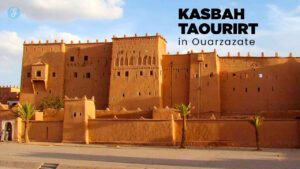The Balkans, often overshadowed by popular tourist spots like Dubrovnik, Athens, and Sofia, are home to some of Europe’s most stunning and lesser-explored destinations. For those who crave a more authentic and off-the-beaten-path experience, these hidden gems offer rich history, scenic beauty, and local traditions that are just as rewarding, if not more, than their famous counterparts.
From ancient fortresses to tranquil riversides, these towns invite travelers to step back in time, indulge in local delicacies, and immerse themselves in centuries-old traditions. Here are 10 Secret Towns in the Balkans Every Traveler Must Visit.
1. Gjirokastër, Albania: The City of Stone
Gjirokastër, nestled in southern Albania, is an absolute must for anyone looking to experience authentic Albanian culture. Known as the “City of Stone” due to its distinctive Ottoman-era houses with stone roofs and cobbled streets, it is one of Albania’s most cherished treasures. Recognized as a UNESCO World Heritage Site for its well-preserved architecture, the town serves as a living museum of Ottoman influence in the Balkans.
A visit to Gjirokastër Castle, perched high above the town, is essential for history buffs. This massive fortress not only offers breathtaking views of the Drino Valley but also houses an intriguing collection of military artifacts. The ethnographic museum, located in the house where Albania’s former dictator Enver Hoxha was born, provides a deeper understanding of Albanian life and traditions.
Gjirokastër is also a haven for food lovers. The byrek, a flaky pastry filled with cheese, spinach, or meat, is a local favorite and a must-try for visitors. Local bakeries serve this quintessential Albanian dish, which serves as the perfect snack while exploring the town.
2. Veliko Tarnovo, Bulgaria: The City of Hills
Often referred to as “The City of the Tsars,” Veliko Tarnovo was the historical capital of the Second Bulgarian Empire. Situated on the Yantra River and surrounded by rolling hills, this town boasts a breathtaking blend of natural beauty and historical significance. The iconic Tsarevets Fortress dominates the skyline with its impressive medieval walls, towers, and churches. The fortress was once the seat of Bulgarian royalty and stands as a testament to the country’s rich past.
Exploring the old town is like stepping into a different era. Traditional houses, artisan workshops, and cozy cafés line the charming cobblestone streets, offering local dishes like kavarma, a hearty stew of meat, vegetables, and aromatic spices. We highly recommend a walk up to the Asen’s Monument for panoramic views of the town and surrounding hills.
Veliko Tarnovo’s vibrant cultural scene includes various festivals, music events, and art exhibitions, giving visitors plenty of reasons to stay longer and soak in the local atmosphere.
3. Trebinje, Bosnia, and Herzegovina: A Tranquil Riverside Escape
Situated near the border with Croatia, Trebinje is a serene town nestled along the banks of the Trebišnjica River. Its picturesque setting, under the shade of plane trees, creates a peaceful, almost dreamlike atmosphere. The town’s charming central square, with its relaxed cafés and local markets, is the perfect spot to unwind after exploring the town’s historical sites.
The Hercegovačka Gračanica Orthodox Church, located on the hill above Trebinje, offers stunning views of the town and its surroundings. This striking church, with its colorful frescoes and domes, is a favorite for photographers. Trebinje is also well-known for its wine culture, with local vineyards producing high-quality wines. A visit to one of the town’s wineries is a wonderful way to experience the region’s viniculture and sample some exceptional varieties, including Vranac, a robust red wine.
One of Trebinje’s most famous dishes is janjetina, a traditional roast lamb that is often slow-cooked over an open fire. This flavorful dish is a highlight of the local cuisine and a must-try for any meat lover.
4. Ohrid, North Macedonia: The Jewel of the Balkans
Often referred to as the “Pearl of Macedonia,” Ohrid is a town rich in both natural beauty and historical significance. The town, located on the shores of sparkling Lake Ohrid, one of Europe’s oldest and deepest lakes, offers visitors stunning views and a wealth of ancient monuments. Ohrid was once a hub of early Christianity, and its countless churches—some dating back over a thousand years—earned it the nickname “Jerusalem of the Balkans.”
One of the most iconic landmarks is the Church of St. John at Kaneo, dramatically perched on a cliff above the lake. This spot offers North Macedonia’s most photographed panoramas. The Monastery of St. Panteleimon, a key site in the development of the Cyrillic alphabet, is another must-see.
Restaurants by the lakeside serve Ohrid trout, a local delicacy known for its delicious fish dishes. Exploring the old town, with its narrow streets and traditional architecture, adds to the charm of this UNESCO World Heritage Site.
5. Šibenik, Croatia: A Coastal Treasure
Often overshadowed by Dubrovnik and Split, Šibenik is a hidden gem on Croatia’s Adriatic coast. With its medieval charm and stunning natural surroundings, Ibenik offers an authentic experience away from the crowds. The town is home to the magnificent Cathedral of St. James, a UNESCO World Heritage Site known for its intricate stonework and sculptural details.
For nature lovers, nearby Krka National Park is a must-visit. Known for its cascading waterfalls and lush greenery, the park is perfect for hiking, swimming, and birdwatching. Back in town, visitors can enjoy Šibenik’s laid-back atmosphere, where narrow alleyways lead to quiet squares and sea-view terraces.
Foodies will love Šibenik’s fresh seafood and traditional pršut, a dry-cured ham that is often served with cheese and olives.
6. Timișoara, Romania: The Little Vienna of the Balkans
Nicknamed “Little Vienna” due to its grand architecture and vibrant cultural scene, Timișoara is a city that effortlessly blends old-world charm with modern innovation. Timișoara, the first European city with electric streetlights, has long been a hub of progress and culture in Romania.
The city’s impressive Baroque and Art Nouveau buildings line the streets, especially around Victory Square, which played a pivotal role in the 1989 Romanian Revolution. Today, Timișoara is known for its cosmopolitan atmosphere, with a rich blend of Romanian, Hungarian, Serbian, and German influences shaping its culture, cuisine, and traditions.
7. Ptuj, Slovenia: The Oldest Town in Slovenia
With a history that dates back to Roman times, Ptuj is Slovenia’s oldest town and a true hidden gem. Perched on the banks of the Drava River, Ptuj is known for its well-preserved medieval architecture and its annual Kurentovanje Carnival, a UNESCO-listed event that celebrates Slovenia’s folk traditions.
At the heart of the town is Ptuj Castle, which offers stunning views of the town below and houses a museum that showcases the region’s rich cultural heritage. The town’s thermal springs and spa resorts make it a wonderful destination for relaxation, while its charming old town offers plenty of cafés and restaurants serving local dishes.
8. Peć, Kosovo: A Mountainous Cultural Haven
Located at the foot of the Rugova Mountains, Peć is a town where nature and culture come together in perfect harmony. Known for the Patriarchal Monastery of Peć, a UNESCO World Heritage Site, the town has long been a spiritual center for the Serbian Orthodox Church. The monastery complex, with its stunning frescoes, is one of the most important religious sites in the Balkans.
For outdoor enthusiasts, the Rugova Gorge offers breathtaking landscapes, making it a wonderful spot for hiking and rock climbing. The town’s blend of cultural heritage and natural beauty makes Peć a unique and rewarding destination for travelers.
9. Kruja, Albania: A Historic Stronghold
Perched high in the mountains, Kruja is a town that played a significant role in Albania’s history as the center of resistance against the Ottoman Empire. Kruja Castle, home to the Skanderbeg Museum honoring Albania’s national hero, Gjergj Kastrioti Skanderbeg, is the town’s most renowned feature. A visit to the Old Bazaar, with its traditional shops selling handcrafted goods, offers a glimpse into the town’s rich cultural traditions.
10. Blagaj, Bosnia and Herzegovina: A Spiritual Sanctuary
Set against the backdrop of towering cliffs, Blagaj is a small village known for its serene atmosphere and its proximity to the Buna River. Blagaj’s highlight is the Dervish Monastery, also known as the Tekija, which sits at the river’s source. The monastery is a peaceful retreat where visitors can experience the spiritual side of Bosnia’s Sufi traditions.
The town’s natural beauty, with its crystal-clear waters and surrounding greenery, makes it an ideal spot for relaxation and reflection. A boat ride along the river is a popular way to take in the stunning scenery.
Final Thoughts
The Balkans are filled with hidden gems that offer travelers a rich mix of history, culture, and natural beauty. From Albania to Slovenia, these 10 little-known towns provide a unique and authentic glimpse into the heart of the region. Whether you’re seeking ancient fortresses, tranquil riversides, or vibrant local traditions, these towns promise an unforgettable journey through the Balkans.





























